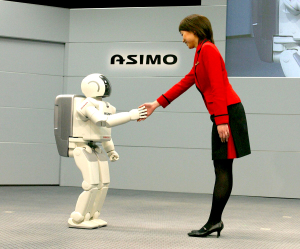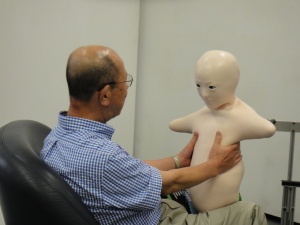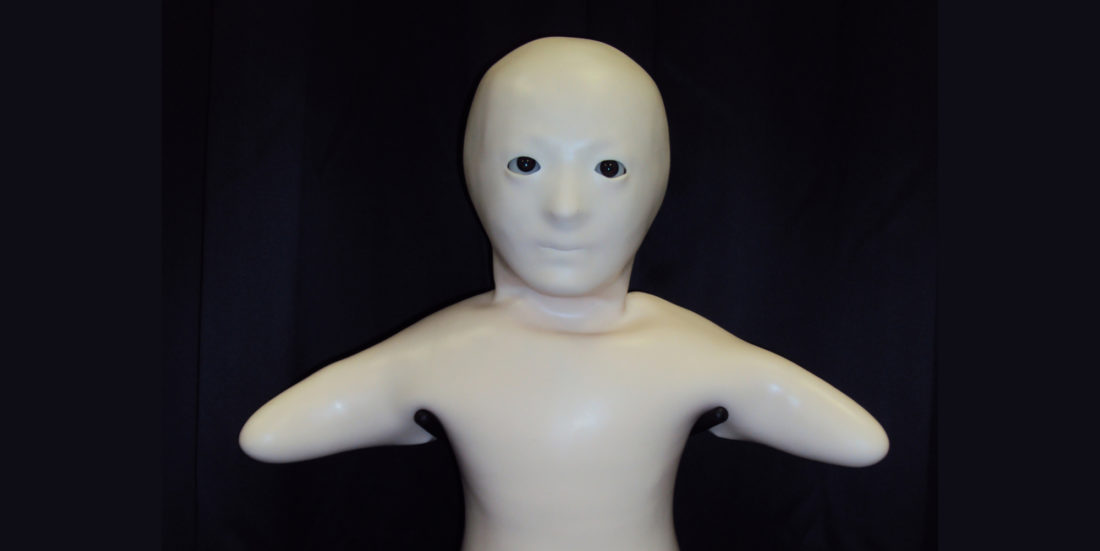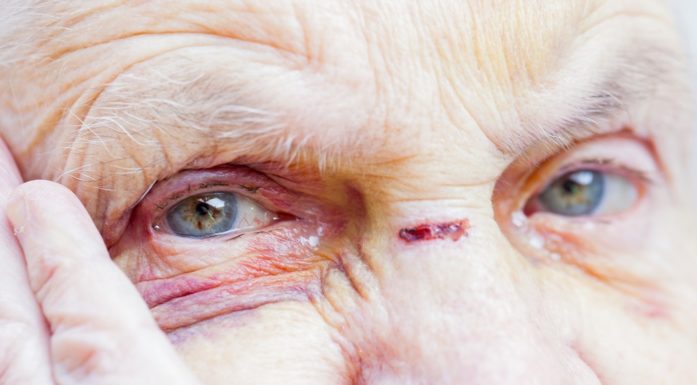Hug a robot with your grandchild’s voice
How would you feel about robots taking over elder care? It may seem odd to you, but most Japanese wouldn’t even think twice about robots caring for their grandparents.
Most of us in Western society are used to the idea of robots that vacuum for us, or mow the lawn. It’s common enough that we don’t really think about it. But what about grandparents at nursing homes cuddling robots that look like baby seals? Does that seem strange?
What if you met a robot that looked so much like a human, you didn’t even notice until it began to move? Is that too creepy? Well, then you probably didn’t grow up in Japan.

For most Japanese, the word robot isn’t automatically associated with the enemy. They don’t automatically think of the Terminator. Japan has had fun, helpful robots for a long time. Photo: Thinkstock
“For historical and cultural reasons, most Japanese have a much easier time accepting robot technology in everyday life,” Roger André Søraa at the Department of Interdisciplinary Studies of Culture explains. Søraa recently handed in his master’s thesis on different types of robots in Japan, and how the average Japanese person views them differently than we do in Western culture. He spent a year doing field work in Japan.
“Most Japanese grow up with robots in pop culture through manga and anime, which are Japanese comic books and films, in the same way we grew up with Donald Duck,” Søraa says.
Robots as caregivers
In Japan, researchers have been experimenting with using robots at nursing homes, especially with dementia patients, for years. A particular success in Japanese nursing homes has been simple ‘hug robots’, which give you a hug whenever you need one.
Paro, a snuggly robot seal, is particularly popular with both children and elders at hospitals in Japan. The seal adapts its behaviour based on the response it gets from its user. These snuggly robots are also being brought into Norway.
Søraa thinks that robots will start to become a lot more common in Norway as well. Nowadays, most of the robots in Norway are vacuuming and cleaning robots that basically that help out with housework. But Søraa thinks that soon, we’ll be using robots as personal assistants and care providers, although maybe not to quite the same degree as in Japan. Japan’s population is decreasing rapidly, is estimated to be half of its current size by 2100. And with Japan’s strict immigration policies, robots are becoming a necessity for certain types of tasks.
A bonus
Telenoid is a “hugging robot” with a neutral facial expression that, when combined with a voice chat program, is meant to create a physical presence. A grandparent could, for example, hold the robot as his or her grandchild talks via Skype, giving grandma or grandpa the feeling of physically holding a loved one. Maybe not as good as the real thing, but it’s certainly better than nothing.

For some of us, Telenoid seems more creepy than nice. The idea behind the design is that it is a sort of empty shell that could represent anyone, says Roger André Søraa at NTNU. Photo: Thinkstock
The whole point of robots is that they are an extra, a bonus. They will never be able to replace human contact, and aren’t trying. The point is to supplement it. For most of us Westerners, Telenoid seems kind of creepy, but the idea is that the neutral face should help the user imagine a loved one instead.
“The idea behind the design is a blank shell that could represent anyone,” says Søraa.
Tradition and religion
For most Japanese, the word ‘robot’ isn’t automatically associated with ‘enemy’. They don’t automatically think of the Terminator. Japan has had helpful, fun robots for a long time. Mechanical Karakuri dollshave been around since the 1730s.
The Japanese are used to things that look humanoid, but aren’t. But we’re used to imagining robots as being out to kill us,” Søraa explains.
Shintoism may also have something to do with this. It is a religion that has had a huge impact on modern Japan. “Kami” is a term in Shintoism that means a god, spirit or phenomenon that is worshipped. A kami is something that is natural, but still unique. The emperor is traditionally considered to be a kami.
Perhaps this concept helps the Japanese to accept something that is not what it appears to be.
Professor Per Østby and Associate Professor Stig Kvaal supervised Søraa’s master’s research. Østby recognizes hoe far we are in Western society from accepting robots, and agrees with Søraa’s conclusions.
“This shows the huge impact that culture has on technology, and how technology is perceived by society,” Østby says.
Many different robots
Søraa divides robots into different types. Purely practical robots are one type that are quite common, even in Western society. St. Olavs Hospital has been experimenting for years with robotic trollies that transport different materials between hospital wings.
Robots can be incredibly simple. An example is a robot that looks like a cross between a stuffed animal and a milk carton — its job is to protest when you leave the fridge door open too long, to help avoid wasting energy.
The cyborgs are here
On the other end of the spectrum are androids and cyborgs. Androids are robots with human characteristics, whereas cyborgs are humans with robotic characteristics. There are plenty of cyborgs among us — people with advanced motorized prostheses or synthetic body parts. It can be difficult to draw the line between human and not human.
When it comes to androids, Aibo the robot dog is perhaps one of the most well known. Sony stopped production in 2008, but this friendly little guy still has a faithful following. Today, Honda’s Asimo and Aldebaran’s Nao are the most advanced and well known of this type of robots.
“It” or “Asimo”?
There are several indicators as to how people in Western culture are less accepting of human-like robots than Japanese are. According to Søraa’s findings, the way we refer to robots is an important one.
In Western society, we mostly call robots “it”, or maybe “he” or “she” in certain circumstances. In Japanese culture, people are rarely referred to as “he” or “she”, because it is considered to be disrespectful to not use a person’s name. But it is also common to refer to advanced robots by name. “Asimo” is referred to as just that, not in a less personal way.
Similar to people
Some of the most advanced robots in the world are the geminoid robots, which are being developed in Japan by people like Hiroshi Ishiguro. At first glance, these robots are no different from humans. But as soon as the geminoid starts moving, you can see that something is different. Currently, they are mainly controlled by human operators with remote controls. But they are becoming more and more advanced. Several different types are in development.
Søraa spent some time visiting researchers in Japan who are working on developing these advanced robots. This is how he describes his experience in his master’s thesis:
“There were six researchers in the room. We all shook hands, except for a professor dressed in black sitting on a chair in the middle of the room. I realized quickly that he wasn’t a person at all. For me, it felt like E.T. was visiting.”
Even though Søraa has grown up in Western society, he is fascinated by Japanese culture and technology. But he doesn’t think that the robotization of society is entirely unproblematic, either. He thinks that the cultural aspect needs to be considered whenever a new type of technology is being implemented.
He impressed more than just Professor Østby with his work. Søraa is now beginning his PhD at the Centre for Technology and Society at the Department of Interdisciplinary Studies of Culture.





